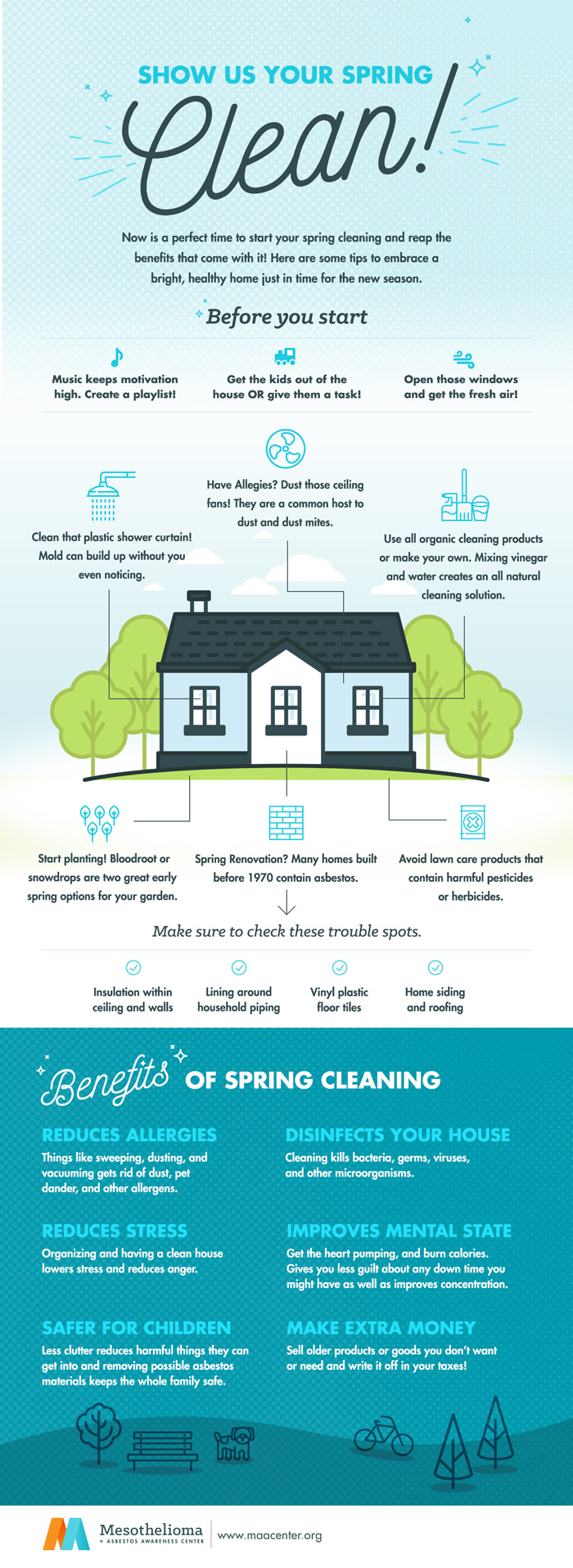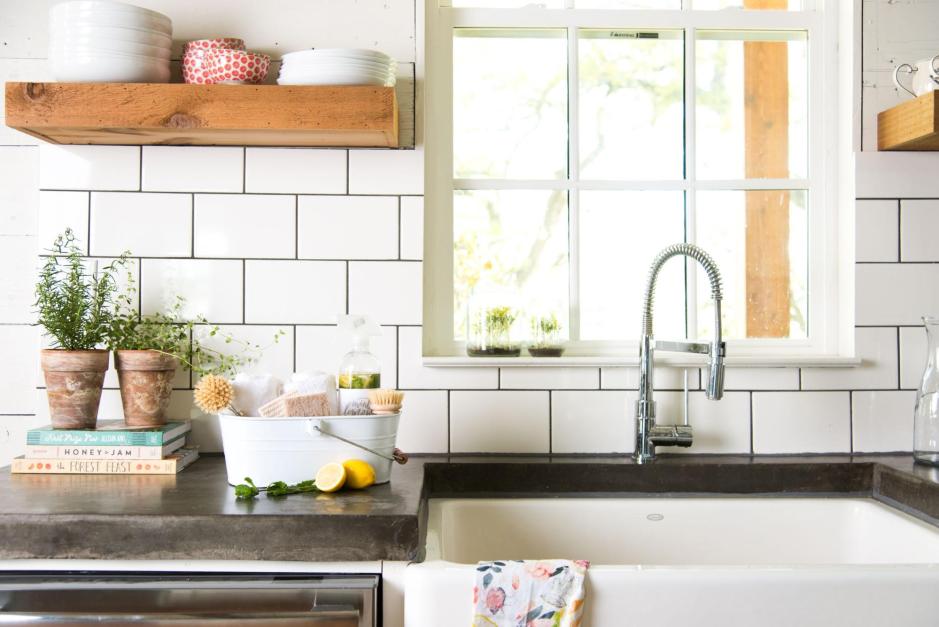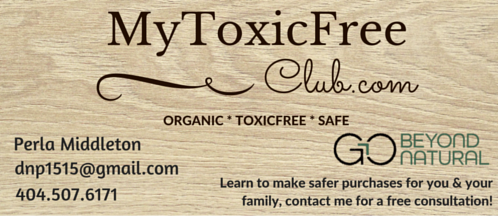Springtime is synonymous with beauty, flowers, and renewal. I associate those things with cleaning because I find beauty in clean things and typically decorate my home with fresh flowers after I organize a have everything sparkling. While it might be tempting to spray your whole place with bleach or disinfectant spray (that make things “clean,” right?), a lot of common household cleaning products are actually pretty toxic to our health. Luckily, there are ways to keep things fresh and sanitary. Read on for the low-down when selecting better and safer products for you, your family and your home.
The Environmental Protection Agency ranks indoor air pollution among the top environmental dangers, and much of this pollution comes from common cleaning products (or what we’ll call “indoor pollutants”). Immediate effects of exposure to indoor pollutants can include headaches, foggy thinking, dizziness, fatigue, and irritation of the eyes, nose, and throat, as well as exacerbated symptoms of asthma and other respiratory illnesses. Long-term effects (following long or repeated exposure to indoor pollutants) include respiratory diseases, autism spectrum disorder, heart disease, learning disabilities, ADHD, cancer, infertility, hormonal imbalances, chronic fatigue, obesity, early puberty, immune system diseases and even cancer. Small particles of dust and toxins can infest your home. Be sure to stay informed about your house and learn about any contaminants that could affect your health. For example, asbestos is a mineral that was used in housing materials. Left alone, it is harmless, but damaged it could pose a serious health concern such as mesothelioma cancer. The indoor pollutants that can cause these reactions are so common that the EPA strongly recommends everyone improve the air quality of their home, regardless of whether symptoms are currently present. (See tips throughout infographic).
Be sure to change your air filter on the recommended schedule to reduce pet dander, dust, and other pollutants from circulating through your home. While cleaning may be more economical than replacing the shower liner in your home, if it is old, you may just need to replace it. Look carefully at the materials the new liner is made of so that you do not bring more hazardous chemicals to your home. Beware of PVC-containing shower curtains which can emit 108 chemicals in the air according to studies by the Center for Health, Environment and Justice, CHEJ. Avoid their cousins made from PEVA or EVA, though less harmful, recent studies have proven them to be harmful nonetheless. Other PVC based products such as flooring can create further issues, so it considering a remodel be sure to consult an expert. Especially if your home was built prior to 1970, as it can contain asbestos. If you are still inclined to be a DIYer, be sure to wear protective masks, gloves and ventilate your home.
For those of us who do not want to spend money on an air purifier, NASA has provided us with great insight to plants, such as:
- Garden Mum
- Spider Plant
- Dracaena
- Ficus/Weeping Fig
- Peace Lily
- Boston Fern
- Snake Plant
- Bamboo Palm
- Aloe Vera
All of whom will purify the air of the following pollutants, ammonia, benzene, formaldehyde, trichloroethylene and xylene. (Thanks to the greatist.com for this fantastic list!)
Don’t rely on the government to protect you when it comes to hazardous chemicals in cleaning products, DO YOUR RESEARCH! They don’t regulate or assess the safety (or even labeling) of the vast majority of cleaning products on the market. The EPA, meanwhile, only regulates cleaners that contain registered pesticides. This means that consumers are basically on their own when it comes to choosing safe cleaning products — a task that’s way easier said than done. (For reviews of the toxicity of household cleaners and even personal care products, check out the Environmental Working Group’s database at www.EWG.com).
Here are some facts about cleaning and cleaners that you may not be aware of:
- There are over 80,000 chemicals in use in the US alone, over 11,000 of which are banned overseas.
- Manufacturers of cleaning products and laundry detergents we use every day (unlike food, beverage and other personal care products) are not regulated by federal law to list their ingredients.
- It takes approximately 26 seconds for any substance to be absorbed through your skin and enter your bloodstream or inhaled and entered into your lungs.
- We are the first generation ever exposed to an unprecedented amount of toxic chemicals on a daily basis, a number which is on the rise.
- Luckily, chemical-laden cleaning products aren’t the only means to keep a home sparkly. Before you purchase anything, arm yourself with information and research on the products you currently use.
Beware of the words Non-Toxic vs Toxic-Free, they mean two different things. While we may use them interchangeably, there is no regulation regarding the Non-Toxic term, even after passing the cut off where something could be considered Non-Toxic does not make it safe. According to the Consumer Product Safety Commission, who created The Federal Hazardous Substance Act, deems a product toxic if it can produce personal injury or illness to humans when it is inhaled, swallowed, or absorbed through the skin. In other words, if a substance kills ONLY 49% of the test subjects, could be legally labeled non-toxic. Makes you feel really safe, right? However, Toxic-Free cannot produce any reaction or harm their subjects in any way shape or form. The solution is to minimize what you can control and prevent exposure in the first place. The first place to start is in your home.
If you are looking for the best of the best, be on the lookout for products that have the Certified Toxic Free seal, like the ones found at www.MyToxicFreeClub.com, next look for EcoCert, Certified Organic, and USDA Certified Biobased. These certifications will insure that the products were produced by conscientious companies and guarantee that all ingredients have been researched, tested and do not cause negative health effects. A lot of us have made homemade cleaning products at some point thinking they are better for us or that they can help save us money and protect the environment; this may not necessarily be true. Research the ingredients first and make sure you will not end up with a worse product in comparison to a store-bought one.

If you are still unsure of how to get started down the path to a healthier toxic-free lifestyle this spring season, feel free to drop me an email at dnp1515@gmail.com and I will answer your more specific questions. Thank you to the Mesothelioma Asbestos Awareness Center for this amazing infographic.
Happy Spring Cleaning!
Perla Middleton
*I was not compensated by maacenter.org for writing this article, however they gave me the rights to utilize this amazing infographic.



You must be logged in to post a comment.